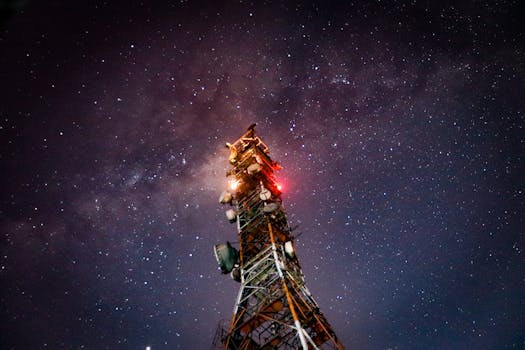
LEO Satellites: Revolutionizing Global Connectivity with Low Earth Orbit Technology
LEO satellites, or Low Earth Orbit satellites, are a type of satellite that operates at an altitude of around 160 to 2,000 kilometers above the Earth’s surface. This is much lower than traditional geostationary satellites, which orbit at an altitude of around 36,000 kilometers. The lower altitude of LEO satellites provides several advantages, including faster communication speeds, lower latency, and improved connectivity.
LEO satellites are being used for a variety of applications, including global connectivity, Earth observation, and navigation. One of the main advantages of LEO satellites is their ability to provide fast and reliable internet connectivity to remote and underserved areas. This is particularly important for communities that lack access to traditional fiber optic or mobile networks. LEO satellites can also be used to provide backup connectivity during natural disasters or other emergencies, when traditional communication networks may be disrupted.
How LEO Satellites Work
LEO satellites work by orbiting the Earth at a low altitude, which allows them to communicate with devices on the ground more quickly and efficiently. Because they are closer to the Earth’s surface, LEO satellites have a shorter signal delay than traditional satellites, which means that data can be transmitted and received more quickly. This makes LEO satellites ideal for applications that require real-time communication, such as video conferencing, online gaming, and virtual reality.
LEO satellites also have a higher bandwidth than traditional satellites, which means they can transmit more data at once. This makes them well-suited for applications that require high-speed internet access, such as streaming video and online file sharing. Additionally, LEO satellites can be used to provide connectivity to a large number of devices at once, making them ideal for applications such as smart cities and IoT (Internet of Things) networks.
Benefits of LEO Satellites
The benefits of LEO satellites are numerous. One of the main advantages is their ability to provide fast and reliable internet connectivity to remote and underserved areas. This can help to bridge the digital divide and provide access to information and communication for communities that lack traditional infrastructure. LEO satellites can also be used to provide backup connectivity during natural disasters or other emergencies, which can help to ensure that critical communication networks remain operational.
LEO satellites also have a number of economic benefits. They can help to stimulate economic growth in remote and underserved areas by providing access to information and communication. They can also help to reduce the cost of communication and internet access, which can make it more affordable for individuals and businesses to access these services.
Challenges and Limitations of LEO Satellites
While LEO satellites offer many benefits, there are also several challenges and limitations to their use. One of the main challenges is the cost of launching and operating a constellation of LEO satellites. This can be expensive, and it may be difficult for some companies or organizations to afford the cost of launching and operating a large number of satellites.
Another challenge is the risk of interference from other satellites or devices. Because LEO satellites operate at a low altitude, they can be affected by interference from other satellites or devices that are operating at the same frequency. This can cause problems with communication and internet access, and it may be difficult to resolve these issues.
LEO satellites also have a limited lifespan, which can range from 5 to 10 years. This means that they will need to be replaced regularly, which can be expensive and may cause disruption to communication and internet services.
Conclusion
LEO satellites are transforming the way we communicate and access information. They offer faster and more reliable connections than traditional satellite technology, and they have the potential to provide internet connectivity to remote and underserved areas. While there are several challenges and limitations to the use of LEO satellites, they have the potential to revolutionize the way we communicate and access information, and they are an important part of the future of satellite technology.



